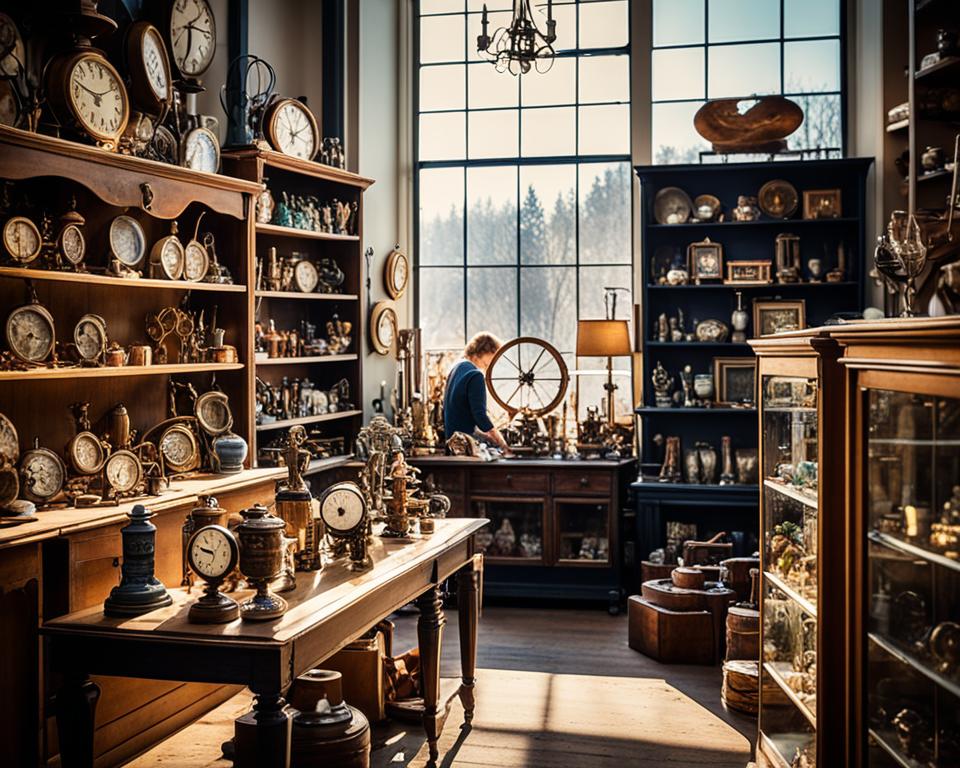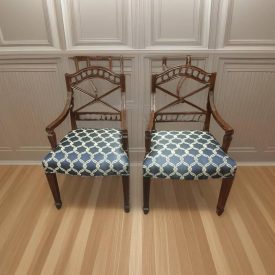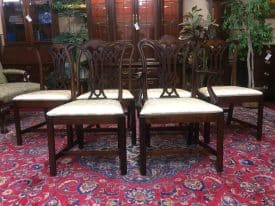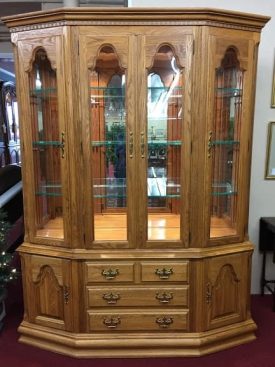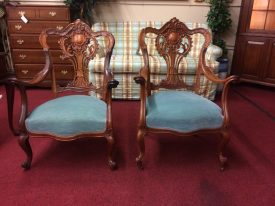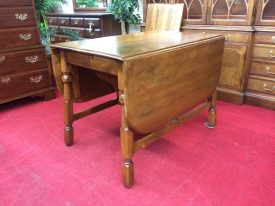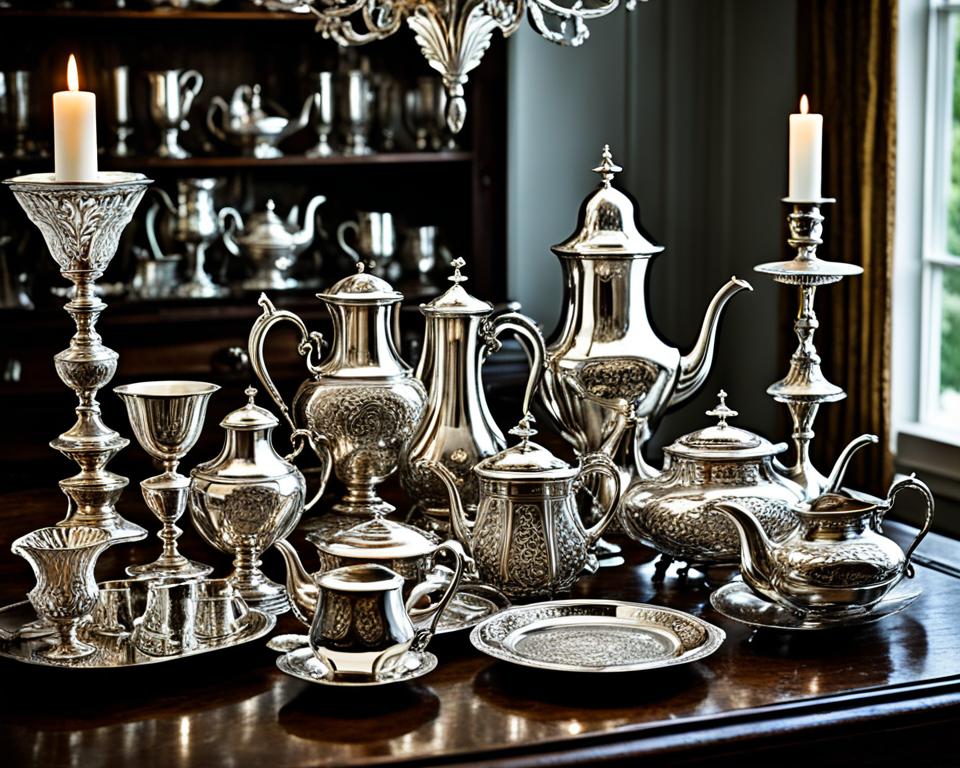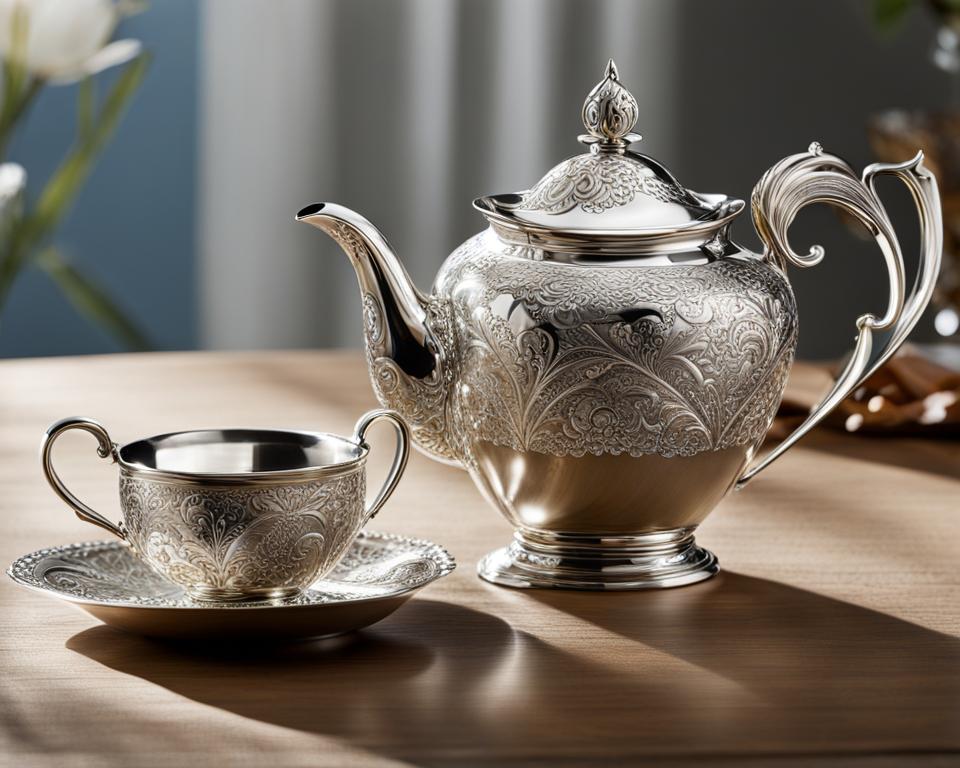Are you a fan of collecting antique decor? Do you love surrounding yourself with vintage home furnishings, antique furniture, retro collectibles, and antique home accessories? Then this article is for you! Whether you’re a seasoned collector or just starting out, we’ve gathered some valuable tips to help you enhance your antique decor collection and make the most of your thrifting adventures.
Thrifting is a popular way to find unique and affordable antique decor pieces. To increase your chances of finding treasures, be sure to frequently visit flea markets and thrift shops. Explore different locations and keep an open mind, as you never know what hidden gems you might discover.
Understanding your design style is key when collecting antique decor. Consider creating a Pinterest board or a mood board to help you focus on the specific aesthetic you’re looking to achieve. This will guide you in selecting pieces that seamlessly blend with your existing home decor.
Don’t be afraid to think outside the box when it comes to using antique pieces in your home. Repurposing items can add a unique touch to your space. For example, an old wooden ladder can be transformed into a stylish bookshelf, or vintage suitcases can be stacked to create a charming side table.
When thrifting for antique decor, it’s essential to do your research. Explore stores online and read Google reviews and Instagram posts to get a sense of what to expect when visiting different locations. Come prepared with sturdy tote bags and cash, as well as a charged phone and a measuring tape to ensure the items you find will fit perfectly in your home.
Lastly, approach thrifting with an open mind. You may come across unexpected finds that add a special touch to your home. Embrace the thrill of the hunt and enjoy the process of discovering one-of-a-kind antique decor treasures.
Key Takeaways:
- Visit flea markets and thrift shops frequently to increase your chances of finding unique antique decor pieces.
- Create a Pinterest board or mood board to help you define your design style and guide your antique decor collection.
- Don’t be afraid to repurpose antique items to add a unique touch to your home.
- Research stores online, read reviews, and utilize social media to get a sense of what to expect when thrifting in different locations.
- Come prepared with sturdy tote bags, cash, a measuring tape, and an open mind to fully embrace the thrifting experience.
Where to Learn About Antiques
For antique enthusiasts looking to expand their knowledge and foster a deeper appreciation for the trade, there are various avenues to explore. These include:
- Antique Dealers: Visiting knowledgeable antique dealers can provide valuable insights into the world of antiques. They can offer expert advice, share their expertise on different types of antiques, and guide you in finding unique pieces.
- Auctions and Antique Fairs: Attending auctions and antique fairs not only allows you to browse and admire a wide range of antiques but also gives you the opportunity to learn from specialists and interact with other enthusiasts. These events often feature informative talks and workshops.
- Online Blogs and Forums: Online platforms dedicated to antiques, such as blogs and forums, are treasure troves of information. They provide a wealth of articles, discussions, and resources on various antique topics. Engaging with fellow enthusiasts can also help you broaden your knowledge and gain different perspectives.
- Books: Books offer in-depth exploration of specific periods, styles, and types of antiques. Whether you’re seeking comprehensive guides or specialized publications, books are an excellent resource for increasing your understanding of antique decor.
- News and Trend Updates: Staying informed about the latest news, trends, and upcoming trade shows in the antique world allows you to stay current and discover new opportunities for learning and collecting. Reading industry-related publications and following reputable online news sources can provide valuable insights.
- Your Own Antique Pieces: Examining the materials, hallmarks, and craftsmanship of your own antique pieces can provide valuable insights into history and the evolution of different styles and techniques. Paying attention to the details and researching the background of your own collection can enhance your understanding of antiques as a whole.
- Short Courses: Short courses, whether offered online or in-person, provide structured learning opportunities for antique enthusiasts. These courses often cover various aspects of antique collecting, restoration, and appraisal, allowing you to deepen your knowledge and refine your skills.
- Television Programs: Popular television programs like Antiques Roadshow and Antiques Road Trip offer valuable tips, captivating stories, and intriguing discoveries. These shows inspire and inform enthusiasts while showcasing the excitement and intricacies of the antique world.
Ultimately, the passion and dedication you bring to your exploration of antiques will drive your learning journey. Remember to immerse yourself in the rich history, stories, and craftsmanship that antique decor offers. With an open mind and a thirst for knowledge, you can develop a deeper appreciation for the artistry and legacy of antiques.
“Antiques are not rooted in the past; they breathe life into the present and inspire a love for craftsmanship and history.” – Unknown
Continue reading for tips from designers on styling with antiques.
Tips From Designers on Styling With Antiques
When it comes to incorporating antique decor into your home, designers have valuable tips to help you create interesting and unique spaces. The key lies in the art of mixing vintage and contemporary pieces to achieve a balanced and visually appealing aesthetic. By combining elements from different eras, you can add character and depth to any room.
“Blending vintage and contemporary pieces can create a truly one-of-a-kind space that reflects your personal style,” says renowned interior designer, Emily Thompson.
One important consideration in selecting antique pieces is to look for interesting profiles and well-made examples from specific eras. Pieces with unique shapes or intricate details can serve as focal points and conversation starters in your home. Additionally, paying attention to the structural integrity of the antique is crucial. While some materials, such as metal, may require minimal restoration, wood furniture might pose more challenges.
“When it comes to antique profiles, I always advise my clients to prioritize quality and craftsmanship. Look for pieces that are intact and in good condition, as they will have a longer lifespan and retain their value,” suggests interior designer, Michael Collins.
To achieve a cohesive look, consider mixing antique pieces from similar eras. This allows for a sense of continuity and ensures that the overall aesthetic remains harmonious. However, don’t be afraid to experiment and mix pieces from different periods if it aligns with your design vision.
“While it’s important to be mindful of era-specific cohesion, don’t be bound by it. Mixing antique items from various periods can create an eclectic and vibrant interior,” advises designer and antique enthusiast, Olivia Carter.
Having a passion for collecting antiques is a driving force in creating a successful vintage-inspired space. Select pieces that resonate with you personally, as they will bring joy and authenticity to your home. Whether it’s a Victorian armchair or a mid-century modern lamp, choose items that reflect your own unique style and taste.
Working with trusted and knowledgeable sources is crucial to ensure that you are acquiring genuine antiques. Seek out reputable dealers, auction houses, or reputable online marketplaces with established track records. This way, you can have confidence that the pieces you purchase are authentic and have been verified.
“I always encourage my clients to do their due diligence and source antiques from trusted dealers or sources. This way, they can be assured of an item’s authenticity and provenance,” advises renowned interior designer, Peter Roberts.
Styling with antiques grants you the ability to infuse your spaces with character and historical significance. As you select pieces, consider factors such as scale, style, and uniqueness to ensure that they complement your existing decor. Each antique should tell a story and contribute to the overall aesthetic appropriateness of the room.
“Antiques have this incredible ability to add a layer of nostalgia and soul to any space. They create a visual narrative of the past, while allowing for personal expression and aesthetic delight,” expresses designer and antique connoisseur, Ava Reynolds.
Staying true to your own design aesthetic is paramount when styling with antiques. Trust your instincts and have fun throughout the process. Experiment with different arrangements and combinations to unleash your creativity and find the perfect balance between vintage and contemporary elements.
Remember, each antique piece has its own history and unique charm. By incorporating these treasures into your home, you not only create a visually captivating space but also pay homage to the craftsmanship of bygone eras.
“Antiques are a window into the past, allowing us to appreciate the artistry and creativity of previous generations. They breathe life into a room and make it truly special,” concludes designer and antique enthusiast, Grace Anderson.
| Designer Tips for Styling With Antiques |
|---|
| Mix vintage and contemporary pieces for a unique aesthetic |
| Look for interesting profiles and well-made examples |
| Mix pieces from similar eras for a cohesive look |
| Select items that speak to your personal style |
| Source antiques from trusted and knowledgeable sources |
| Consider scale, style, and uniqueness when selecting pieces |
| Stay true to your own design aesthetic and have fun |
Benefits of Collecting Antiques
Collecting antiques offers a multitude of benefits, allowing individuals to not only own a piece of history but also delve into the captivating stories behind each item. Antique objects possess a unique charm that brings a sense of personality and individuality to any home.
Antiques have a rich historical significance, providing valuable insights into specific times, places, makers, and owners. Each piece represents a frozen moment in history, offering a tangible connection to the past and allowing collectors to appreciate the craftsmanship and artistry of previous generations.
| Benefits of Collecting Antiques | Description |
|---|---|
| 1. Historical Significance | Antiques offer insights into specific times, places, and people, allowing collectors to uncover unique stories and perspectives. |
| 2. Unique Objects | Antiques are one-of-a-kind treasures that cannot be replicated, adding a distinctive touch to your home decor. |
| 3. Frozen History | Each antique piece captures a moment in time, preserving a part of history that can be admired and appreciated. |
| 4. Adding Personality | Antiques infuse character and personality into your living space, reflecting your personal style and interests. |
| 5. Exploring Stories | Collecting antiques allows you to unravel the unique stories and narratives behind each piece, sparking curiosity and conversation. |
Antiques also serve as captivating focal points within a room, creating intriguing conversational pieces that invite discussion about their origins and historical significance. They add a layer of depth and character to contemporary spaces, harmoniously blending the old with the new.
By embracing the world of antique collecting, individuals can immerse themselves in the captivating stories and timeless beauty that these objects carry, breathing life and allure into their homes.
Building an Antique Collection
When it comes to building an antique collection, starting small and gradually expanding is key to success. By taking this approach, you can grow your knowledge and collection organically, allowing you to make informed decisions along the way.
Researching the values of different types of antiques is essential in order to navigate the vast market effectively. Understanding the market value of various items will enable you to avoid overpaying and make smart purchases. This research can be done through online resources, reference books, and consultation with experts in the field.
Authenticity is a crucial factor when building an antique collection. Unfortunately, there are many reproductions and fakes in the market, making it important to have a solid understanding of how to identify genuine antiques. Look out for hallmarks, signatures, and other indicators of authenticity, and if in doubt, consult an expert who can provide valuable guidance.
Seeking expert advice is a valuable step in the process of building an antique collection. Antique dealers and specialists have extensive knowledge and experience in the field, making them excellent sources of information. They can offer insights into market trends, help you identify rare and desirable pieces, and guide you away from potential pitfalls.
| Building an Antique Collection Checklist |
|---|
| Start small |
| Research the values of different types of antiques |
| Understand authenticity and how to identify genuine antiques |
| Seek expert advice from antique dealers and specialists |
Developing relationships with trusted sources is another strategy for building an antique collection. When you establish connections with reliable dealers and collectors, you may gain access to unique opportunities and be informed about rare and high-quality pieces that align with your interests.
By following these guidelines, you can embark on an exciting journey of building an antique collection that reflects your passion and taste. Remember, building a collection takes time and patience, so enjoy the process and celebrate each unique find along the way.
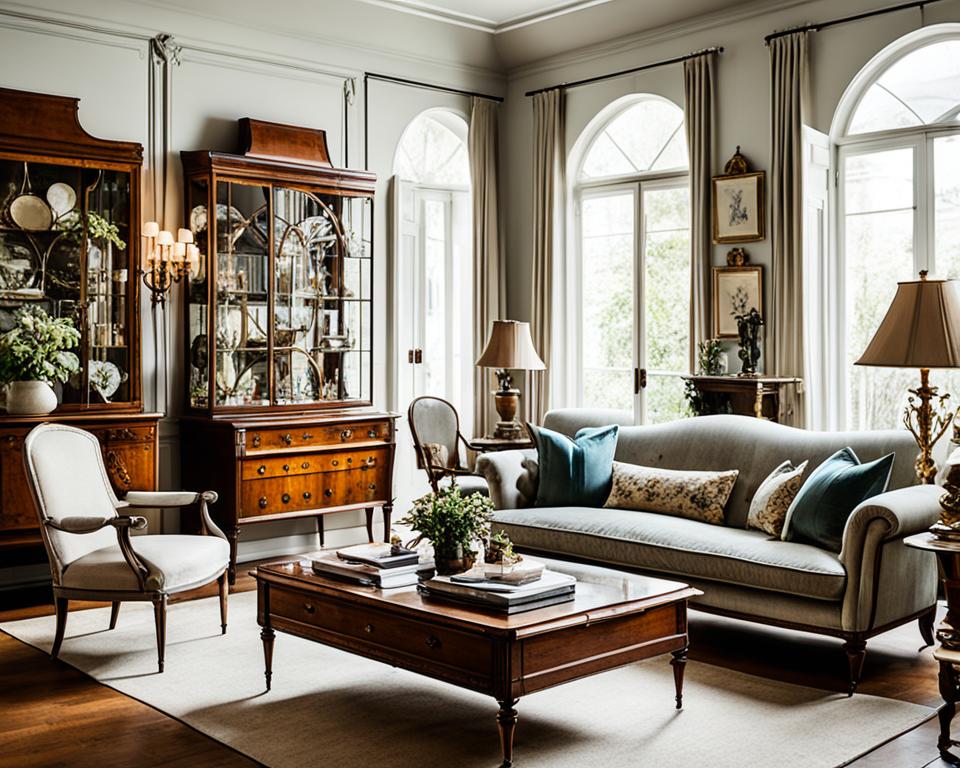
Testimonial
“Building my antique collection has been a truly enriching experience. Starting small and doing my research has allowed me to make informed choices and discover some incredible pieces. Seeking expert advice has been invaluable in avoiding common mistakes and uncovering hidden gems. I’m grateful for the connections I’ve made in the antique world, as they’ve opened doors to unique opportunities and expanded my collection in ways I never imagined.” – Sarah Thompson, Antique Enthusiast
Caring for Antique Decor
Proper care is essential to preserve the beauty and value of antique decor. Whether you have a treasured antique vase, a delicate piece of antique furniture, or a vintage home accessory, following the right cleaning and maintenance practices is crucial.
Cleaning and Maintenance
When it comes to cleaning and maintaining antiques, it’s important to follow specific guidelines tailored to each type of antique. Certain materials and finishes require special care to prevent damage. Here are some general tips to keep in mind:
- Dust regularly: Use a soft, lint-free cloth or a soft-bristle brush to remove dust from the surface of your antiques. Dusting should be done gently, without using any harsh chemicals or abrasive materials.
- Avoid moisture: Moisture can cause irreversible damage to antique pieces, such as warping or mold growth. Ensure that your antiques are kept in a dry environment and protected from any water or liquid spills.
- Use appropriate cleaning products: When it’s necessary to clean an antique, make sure to use products that are specifically designed for that type of material. Avoid using harsh chemicals or strong solvents, as they can strip away finishes or cause discoloration.
- Handle with care: When moving or handling antique pieces, always do so with caution. Support the item from underneath and avoid putting excessive pressure or strain on fragile areas.
Preventive Measures
Preventive measures can help safeguard your antique decor from unnecessary wear and tear. By taking the following precautions, you can preserve the condition and longevity of your antiques:
- Protective covers: Use protective covers or cases to shield your antiques from dust, sunlight, and accidental damage. This is especially important for fragile items that are prone to breakage.
- Avoid direct sunlight: Excessive exposure to sunlight can cause fading, discoloration, and deterioration of antique finishes. Keep your antiques away from direct sunlight or use UV-blocking window films or curtains to minimize the impact of sunlight.
- Avoid extreme temperatures: Fluctuations in temperature can cause materials to expand and contract, leading to structural damage or cracks. Keep your antiques in a stable environment with moderate temperature and humidity levels.
Professional Restoration
If you have heavily damaged or worn-out antique pieces that require extensive restoration, it’s crucial to seek the assistance of reputable and experienced restoration experts. Professional restoration can bring new life to your cherished antiques while preserving their historical value. Attempting DIY restoration techniques can potentially damage the integrity of the antique and diminish its value.
Here is an example of a well-reputed restoration expert:
“Antique Restoration & Conservation Services” has over 30 years of experience in restoring various types of antiques, from furniture to ceramics and paintings. Their team of skilled artisans combines traditional techniques with modern preservation methods to ensure a meticulous and faithful restoration process. Trust your valuable antiques to the experts at “Antique Restoration & Conservation Services.””
Caring for your antique decor requires attention, patience, and a gentle touch. By following proper cleaning and maintenance practices, taking preventive measures, and seeking professional restoration when necessary, you can enjoy the beauty and historical significance of your antiques for years to come.
Displaying Antique Decor in Your Home
Antique decor adds a touch of elegance and charm to any space. When it comes to displaying your antique pieces, it’s important to showcase them as focal points in your home. By incorporating antiques into your existing decor, you can create a unique and personalized space that reflects your style and personality. Here are some tips on how to effectively display antique decor:
- Showcasing as Focal Points: Place your antique pieces in prominent locations where they can be admired and appreciated. This could be a beautiful vintage sideboard in your dining room or a stunning antique chair in your living room. By making them the center of attention, you can highlight their beauty and historical significance.
- Incorporating into Existing Decor: Mix and match your antiques with modern elements to create an eclectic and visually interesting space. For example, pair a vintage chandelier with contemporary furniture or display antique china on a sleek, modern side table. This blending of styles creates a harmonious and timeless aesthetic.
- Creating Curated Vignettes: Arrange your antique pieces in curated vignettes to create visual interest and showcase their uniqueness. Group similar items together, such as a collection of vintage perfume bottles or a set of antique books, and display them on a shelf or mantel. This creates a cohesive and eye-catching display.
- Balancing with Modern Elements: Balance your antique decor with modern elements to create a well-balanced space. The key is to find the right mix of old and new. For example, pair an antique mirror with a contemporary sofa or use antique artwork as a focal point in a modern gallery wall. This juxtaposition adds depth and character to your overall design.
- Experimenting with Arrangement Styles: Don’t be afraid to think outside the box when it comes to arranging your antique pieces. Try placing them in unexpected locations, such as a vintage trunk in your entryway or an antique vase on a bathroom vanity. This unexpected placement adds an element of surprise and intrigue to your decor.
- Regularly Rotating Pieces: To keep your display fresh and interesting, consider regularly rotating your antique pieces. This allows you to showcase different items and prevent your decor from becoming stagnant. By periodically changing the arrangement, you can continuously enjoy the beauty of your antique collection.
Remember, displaying antique decor is a creative process that allows you to express your personal style and appreciate the beauty of these timeless pieces. Have fun experimenting with different arrangements and finding the perfect balance between antique and modern elements in your home.
| Antique Display Do’s | Antique Display Don’ts |
|---|---|
| Showcase antiques as focal points | Avoid overcrowding the space with too many pieces |
| Blend antiques with modern elements | Don’t neglect proper lighting to highlight your antiques |
| Create curated vignettes | Avoid placing antiques in high-traffic areas where they can get damaged |
| Experiment with different arrangement styles | Don’t display antiques in areas with high moisture or direct sunlight |
| Regularly rotate your antique pieces | Avoid cluttering your space with irrelevant or unrelated items |
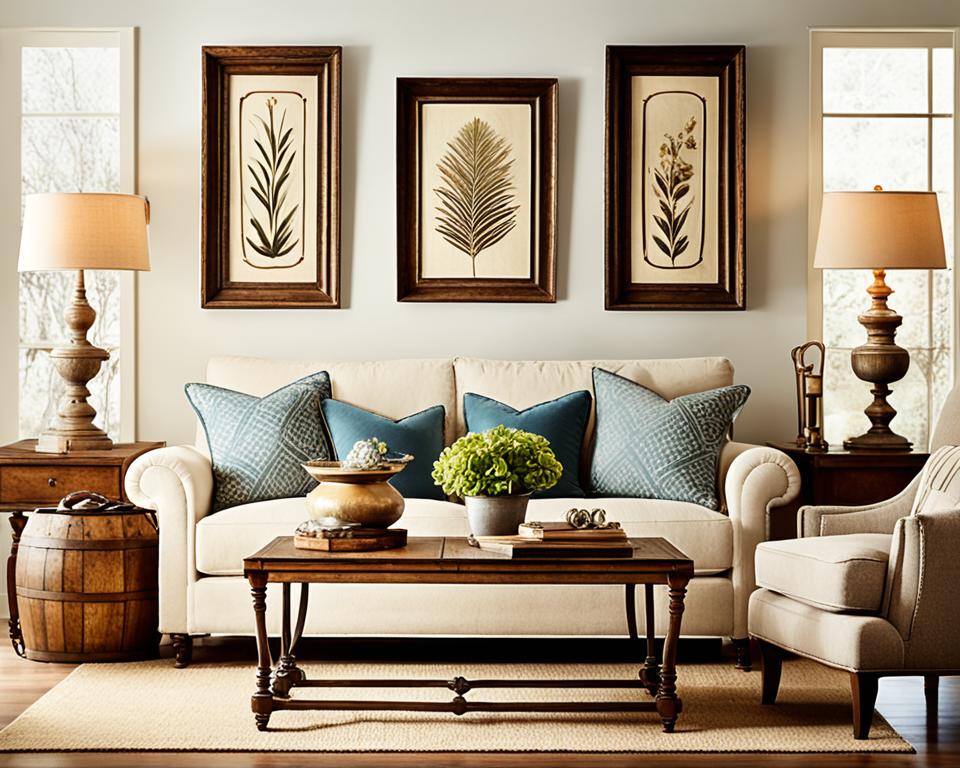
Resources for Antique Decor Enthusiasts
Antique decor enthusiasts have access to a variety of resources that can enhance their collecting experience. Whether you’re looking for antique pieces to add to your collection or seeking knowledge and connections within the antique community, these resources can be invaluable.
Online Marketplaces
Online marketplaces provide a convenient platform for buying and selling antique decor. Websites such as eBay, Etsy, and Ruby Lane offer a wide range of antique pieces from different eras and styles. These platforms allow you to browse through thousands of listings and connect with sellers from around the world.
Antique Associations and Museums
Antique associations and museums are excellent sources of educational programs, events, and exhibitions dedicated to antiques. These organizations often host workshops, lectures, and tours that can expand your knowledge and appreciation of antique decor. They also provide opportunities to connect with fellow collectors and experts in the field.
Antique Shows and Fairs
Attending antique shows and fairs is a great way to immerse yourself in the world of antique decor. These events bring together dealers, collectors, and enthusiasts, creating a vibrant marketplace and a conducive environment for learning and purchasing. Explore local antique shows and fairs in your area or consider traveling to larger national or international events.
Online Forums and Social Media Communities
Online forums and social media communities offer platforms for antique enthusiasts to connect, share knowledge, and seek advice. Websites like Antiques Board, Antique Trader, and Reddit’s r/Antiques provide spaces where collectors can engage in discussions, ask questions, and share their experiences. Social media platforms such as Facebook, Instagram, and Pinterest also have dedicated antique communities where enthusiasts can connect and discover new treasures.
“Engaging with online forums and social media communities allows me to connect with fellow antique collectors from different parts of the world. I have learned so much from their expertise and have made lasting friendships along the way.” – Antique enthusiast
By utilizing these resources, you can expand your network, learn from experts, and discover new pieces for your antique collection. Whether you’re a seasoned collector or just starting out, these resources will enhance your appreciation for antique decor and provide valuable insights into the world of antiques.
Conclusion
For antique decor enthusiasts, collecting vintage home furnishings and retro collectibles is more than just a hobby; it’s a passion that allows them to find unique treasures and add a touch of history to their homes. By following the expert tips and recommendations shared throughout this article, collectors can enhance their collecting journey and make the most out of their antique decor pursuits.
Thrifting and exploring flea markets and thrift shops are excellent ways to uncover hidden gems and one-of-a-kind pieces that speak to your personal style. The thrill of finding that perfect vintage item is unmatched, and it’s a testament to the joy of the hunt.
Learning about antiques through books, courses, and online resources not only expands your knowledge but also deepens your appreciation for the craftsmanship and stories behind each antique piece. It allows you to make informed decisions when adding to your collection and gives you valuable insights into the history and significance of the items you own.
Styling with antiques is an art in itself, as it allows you to infuse personality and character into your home. By seamlessly blending vintage pieces with modern elements, you can create a curated and timeless aesthetic that truly reflects your unique style.
Building an antique collection requires patience, diligent research, and a genuine passion for exploration. It’s about taking the time to seek out trusted sources, staying informed about the market, and developing relationships with knowledgeable individuals who can guide and advise you on your collecting journey.
Caring for your antique decor properly is paramount to ensure its longevity. By following the recommended cleaning and maintenance guidelines, as well as taking preventive measures to protect your pieces, you can preserve their beauty and value for years to come.
Lastly, displaying your antiques in your home allows you to showcase their beauty and heritage. Whether as focal points in a room or as curated vignettes, these unique treasures become not only conversation starters but also the heart of your home’s decor.
As an antique decor enthusiast, take advantage of the resources available to you, such as online marketplaces, antique associations, museums, antique shows, online forums, and social media communities. These platforms provide opportunities to expand your knowledge, connect with like-minded individuals, and continue discovering new and exciting pieces for your collection.
So, embrace your passion for antique collecting, and may your journey be filled with endless joy, memorable finds, and the satisfaction of finding those extraordinary treasures that bring warmth and character to your home.
FAQ
How can I find unique and affordable antique decor?
Thrifting is a popular way to find unique and affordable antique decor. It’s important to frequently visit flea markets and thrift shops to increase your chances of finding treasures.
How can I increase my knowledge about antiques?
One of the best ways to learn about antiques is to visit antique dealers who are knowledgeable about the trade. Auctions and antique fairs also provide opportunities to browse and learn from specialists and other enthusiasts.
Where can I find resources and information about antiques?
Online blogs, forums, and books offer a wealth of information on various antique topics. Television programs like Antiques Roadshow and Antiques Road Trip also provide tips and inspiration. Antique associations and museums offer educational programs, events, and exhibitions dedicated to antiques. Online marketplaces provide access to a wide range of antique pieces for sale.
How should I style with antiques?
Designers recommend mixing vintage and contemporary pieces to create interesting and unique spaces. When selecting antiques, look for interesting profiles and well-made examples of specific eras. Consider incorporating antiques into existing decor to create an eclectic and personalized space. Balancing antique elements with modern elements creates a harmonious and timeless aesthetic.
What are the benefits of collecting antiques?
Antiques offer the opportunity to own a piece of history and explore the stories behind each item. They bring a sense of uniqueness and personality to your home. Antique objects have a rich history, offering insights into a specific time, place, maker, and owner. Collecting antiques allows you to build a connection to the past and appreciate the craftsmanship and artistry of previous generations.
How can I build an antique collection?
Starting small and gradually expanding your knowledge and collection is key. Researching the values of different types of antiques can help you make informed decisions and avoid overpaying. Seeking expert advice from antique dealers and specialists can provide valuable insights and help you avoid common pitfalls.
How do I properly care for antique decor?
Regular cleaning and maintenance should be done following guidelines specific to each type of antique. Preventive measures, such as using protective covers and avoiding exposure to direct sunlight or extreme temperatures, can prevent damage. Professional restoration may be necessary for heavily damaged or worn-out pieces.
How can I effectively display antique decor in my home?
Displaying antique decor involves showcasing pieces as focal points in a room. Consider incorporating antiques into existing decor to create an eclectic and personalized space. Creating curated vignettes can highlight the uniqueness of each piece and add visual interest. Experiment with different arrangement styles and regularly rotate pieces to keep the display fresh.
What resources are available for antique decor enthusiasts?
Online marketplaces, antique associations, museums, and antique shows provide opportunities for learning and purchasing. Online forums and social media communities allow enthusiasts to connect, share knowledge, and seek advice from fellow collectors.

